- Home
- Joyce Carol Oates
Prison Noir
Prison Noir Read online
Table of Contents
___________________
Introduction by Joyce Carol Oates
PART I: GHOSTS IN THE MACHINE
Shuffle
CHRISTOPHER M. STEPHEN
Federal Correctional Institution, Oxford (Oxford, Wisconsin)
I Saw an Angel
SIN SORACCO
California Institution for Women (Corona, California)
Bardos
SCOTT GUTCHES
Fremont Correctional Facility (Cañon City, Colorado)
Trap
ERIC BOYD
Allegheny County Jail (Pittsburgh, Pennsylvania)
A Message in the Breath of Allah
ALI F. SAREINI
Coldwater Correctional Facility (Coldwater, Michigan)
PART II: CAGED BIRDS SING
Tune-Up
STEPHEN GEEZ
Ryan Correctional Facility (Detroit, Michigan)
Foxhole
B.M. DOLARMAN
Oklahoma State Penitentiary (McAlester, Oklahoma)
There Will Be Seeds for Next Year
ZEKE CALIGIURI
Minnesota Correctional Facility, Stillwater (Bayport, Minnesota)
Immigrant Song
MARCO VERDONI
Marquette Branch Prison (Marquette, Michigan)
Rat's Ass
KENNETH R. BRYDON
San Quentin State Prison (San Quentin, California)
PART III: I SAW THE WHOLE THING, IT WAS HORRIBLE
Milk and Tea
LINDA MICHELLE MARQUARDT
Women's Huron Valley Correctional Facility (Ypsilanti, Michigan)
Angel Eyes
ANDRE WHITE
Ionia Correctional Facility (Ionia, Michigan)
How eBay Nearly Killed Gary Bridgway
TIMOTHY PAULEY
Monroe Correctional Complex (Monroe, Washington)
3 Block from Hell
BRYAN K. PALMER
Jackson State Prison (Jackson, Michigan)
The Investigation
WILLIAM VAN POYCK
Florida State Prison (Raiford, Florida)
About the Contributors
Bonus Materials
"Run Kiss Daddy," by Joyce Carol Oates
from New Jersey Noir (Joyce Carol Oates, Ed.)
Sneak Peek: USA Noir
Also in Akashic Noir Series
Akashic Noir Series Awards & Recognition
About Akashic Books
Copyrights & Credits
INTRODUCTION
SEEDS FOR NEXT YEAR
"The blood jet is poetry”—these words of Sylvia Plath have reverberated through my experience of reading and rereading the fifteen stories of Prison Noir.
In this case the blood jet is prose, though sometimes poetic prose; if we go a little deeper, in some chilling instances, the blood jet is exactly that: blood.
For these stories are not “literary” exercises—though some are exceptionally well-written by any formalist standards, and artfully structured as narratives; with a single exception the stories are stark, somber, emotionally driven cris de coeur. (The exception is the collection’s only fully comic/satiric story, “How eBay Nearly Killed Gary Bridgway” by Timothy Pauley.) We may feel revulsion for some of the acts described in these stories, but we are likely to feel a startled, even stunned sympathy for the perpetrators. And in several stories, including even murderers’ confessions, we are likely to feel a profound and unsettling identification. As the protagonist of “The Investigation” says, at the end of the story that fittingly concludes this volume, “I saw the whole thing. It was horrible.”
* * *
These fifteen stories, highly diversified in language, setting, point of view, subject matter, and “voice,” have been chosen from a wealth of material—nearly one hundred story submissions—solicited by Akashic Books publisher/editor Johnny Temple, with whom I assembled the anthology New Jersey Noir several years ago. Over a period of months we encountered much writing that was extremely promising—distinctive voices demanding and deserving to be heard; virtually all of the submissions were serious and sustained efforts at writing fiction, and a number of the authors submitted multiple stories. Perhaps it shouldn’t be a surprise that so much well-crafted writing comes from the incarcerated when we consider that, hardly to our credit, the United States locks up nearly 25 percent of the world’s prison population, while having only 5 percent of the world’s overall population. Or, in other terms, the United States incarcerates more than 2.2 million individuals, a far higher rate per capita than any other nation. (According to the International Centre for Prison Studies, the US is number one, with St. Kitts and Nevis just below at two; Rwanda at six; South Africa at thirty-seven; Iran at thirty-nine; Israel at sixty-four; the UK at 104; China at 127; and Canada at 135.)
And why, we wondered, were so many good stories being written in Michigan prisons? It must be that prison writing programs are particularly strong in that state, but there are long-standing writing programs in New York, California, and elsewhere as well. So strange, we did not receive a single publishable story from any New York State facility. Undoubtedly, this is a reflection, in part, of the difficulty we had spreading our call for submissions far and wide to a population intentionally cut off from mainstream society . . . We discovered along the way, for example, that some institutions don’t allow prisoners to write, while in others they are allowed to write but not, perversely, about crime or prisons!
It wasn’t always a “pleasure” to read this frequently raw, crude, and disturbing material, but it was definitely an engaging and illuminating experience; there are a number of stories here which I’ve reread several times, as if mesmerized, and one or two which I still don’t quite fully fathom, in the way that we are drawn to meditate upon highly subjective, introspective works of prose and poetry that don’t yield their meanings easily. Indeed, there is beautifully rendered prose in this volume—in “Bardos,” “Tune-Up,” “There Will Be Seeds for Next Year,” and “Angel Eyes,” among others—but writerly prose is probably not the primary reason one might be drawn to read stories by prison inmates. More likely it is the wish to see life from a perspective only imagined by most of us, and to speculate how, in the writers’ places, we might manage to survive, or fail to survive.
So suffused is prison fiction with seemingly autobiographical material, so steeped in the intensity of private anguish, it is tempting to describe most of it as “memoirist fiction”—at least, virtually all of the stories in this volume have the disconcerting ring of authenticity, and not invention. The author is compelled to write about him- or herself and to bear witness to what has been seen, heard, and experienced inside prison, no matter how painful, humiliating, or appalling. Not one of the stories I read evoked a fictitious world other than the claustrophobic prison-world, except in memory (and sometimes, as in the deceptively titled “Milk and Tea” by Linda Michelle Marquardt, the past is more nightmarish than the present); still less did any writer explore such popular genres as fantasy, mystery, or science fiction. Though the prisoners’ lives as recorded here often touch upon the surreal, the hallucinatory, and the frankly horrific, no one chose to write in the “horror” genre. How revealing this is, and how appropriate, the reader of Prison Noir will soon discover.
There is no need for fantasy-horror in a place in which matter-of-fact horror is the norm, and mental illness is epidemic. Vividly rendered realism is the predominant literary strategy, as in a riveting documentary film: “‘Meatloaf,’ grumbled Al. To him, it smelled as if someone had taken a dog and boiled it in its own offal” (from “Shuffle” by Christopher M. Stephen). “On days that they planned to kill [a condemned man], you could hear the men on H-South
singing some kind of sound . . . the most mournful sound my ears have ever heard” (from “Foxhole” by pseudonymous B.M. Dolarman). The tensely lyric “Tune-Up” by (also pseudonymous) Stephen Geez brings together prisoner-musicians in a touching and (to a degree) triumphant affirmation of the power of music to bind individuals together—“It’s play music or fight a lot,” as one of them says. The surreal, minimalist “Trap” by Eric Boyd moves in a quick, skidding jump to its stark conclusion: “I stared at my shirt, the word INMATE printed on the breast-pocket, thumping with the rapid beat of my heart.”
In one of the most bizarre and original stories in this collection, “A Message in the Breath of Allah” by Ali F. Sareini, a strange sort of vernacular poetry is spoken by a psychotic killer—unless this devout Muslim is a religious mystic: “Only the fading light of day was visible through the barred window as I entered the cells at Coldwater. The shadows were silent.”
The very antithesis of a psychotic, compulsive killer is the naive young Mexican illegal immigrant of Marco Verdoni’s “Immigrant Song,” who finds himself imprisoned in freezing Michigan without ever quite comprehending what is happening to him, or why:
It was spring when [Celso] came to the States; summer when they arrested him. The jail didn’t have any windows, so when the van came to take him to prison, he didn’t know what the brown slush was on the floor. He thought it was vomit.
“It’s a blizzard,” the driver said, pulling out of the jail. “Total whiteout.”
Poor Celso, knowing no English, finds himself convicted of felony murder in a drug dispute; he thinks he will be released at the age of twenty-two, and learns belatedly that he must serve a minimum of twenty-two years. Interesting to note that the most bloody, barbaric killings in Prison Noir take place in this story, in a turkey slaughterhouse in which the young Celso works until he is fired and forced to support himself by selling drugs.
Most of the inmates in these stories are mature in their acceptance of “guilt,” and resigned to their fates; most, in fact, are older prisoners, and several are old enough to be grandfathers. (As the self-admitted murderer of “Angel Eyes” acknowledges at the age of seventy-eight, he has outlived his own children.) In the volume’s most sensational story, “3 Block from Hell” by Bryan K. Palmer, a serial killer boasts of having killed 198 men—“Each one of them deserved it. You don’t believe me? I’ll let you be the judge”—and his identity, revealed only at the story’s end, is a shocker. In Andre White’s “Angel Eyes,” an intensely narrated story with a stunning ending, it is noted:
Fish! Every day they come in younger and younger. Pretty soon they’ll be babies, and I’ll end up having a work detail changing diapers . . . I was once like the one or two young bucks of a batch that ain’t a cur. Oh, I ’member wings in my stomach flapping ’bout when I done my first stretch, was eighteen years old and ready for whatever. I’d seen some wild ones come through that bit hard, like a piranha in a fishbowl.
The entertaining “How eBay Nearly Killed Gary Bridgway” by Timothy Pauley provides a most unusual perspective on the infamous Green River Killer (Washington State, 1980s and 1990s, convicted in 2003), as an enterprising fellow inmate and his mercenary wife drum up business selling the serial killer’s autograph online. As P.T. Barnum once observed, no one ever went broke underestimating the taste of the American public.
The blunt opening of “Milk and Tea” by Linda Michelle Marquardt takes us immediately into the spiritual paralysis of Women’s Huron Valley (Michigan), or “Death Valley”:
Her feet must have been only two feet from the ground as her body dangled like a rag doll from the door hinge. There was chaos: screams, officers running, hands shaking, fellow inmates praying, everyone watching with morbid curiosity as her limp body crashed on the cement floor, cracking her skull. Not that it mattered: she was already dead. Damn! I was jealous . . .
In flashback scenes of unrelieved tension we learn how the depressed and suicidal protagonist has been sexually abused and threatened with death by her late, psychotic husband—ironically, “a licensed attorney in three states [with] a master’s degree in medical anthropology. Still, he’d never had a job—he died at the age of thirty-two and had never worked a day in his life.”
In “I Saw an Angel” by Sin Soracco, a story with an unexpectedly upbeat ending, we are privy to the intimate lives of women prisoners in a facility in Corona, California, where time passes with stultifying boredom “built on broken trivialities . . . thinking, but to no real purpose, just mind beeps puddling up in the swamp.” In both “I Saw an Angel” and “Milk and Tea”—the only stories by women writers in the volume—the sympathetic and intelligent protagonists are seen as victims of crimes perpetrated against them by men, rather than as criminals themselves. But the stories have radically different endings. (Please note: we tried very hard to locate more stories by women prisoners. But since less than 10 percent of inmates in US prisons are female, two contributions out of fourteen isn’t so very disproportionate.1)
In the cleverly constructed “Shuffle” by Christopher M. Stephen, a veteran of decades of incarceration in the segregation unit of an Illinois prison is agitated by having to share his cell with another man who, by degrees, comes to dominate him as his old, long-repressed crimes are invoked; until at last, the older prisoner’s final defense is taken from him and he is left utterly bereft—“You can’t gamble what you’ve already lost.” Another feat of sustained suspense, the almost entirely conversational “Rat’s Ass” by Kenneth R. Brydon, limns the exposure of a criminal con man/sociopath in staccato dialogue reminiscent of David Mamet.2)
The most ambitious of Prison Noir stories is the poetically composed “Bardos” by Scott Gutches, divided into four quarters in mimicry of the four cyclical seasons; partly a eulogy for an older inmate who has died unexpectedly, and partly a eulogy for the protagonist whose sensitivity and intelligence suggest a tragic disparity between character and fate. He is living a suspended, bardo-like existence between life and death, the “bardo” state being, according to the ancient revered Tibetan Book of the Dead, “a progression of moments before, during, and after life leaves the body.” The protagonist is transfixed in his bardo-state, unable to break free of the cyclical existence of things. The great sin of his life seems to have been his betrayal of his father, who had originally betrayed him by having led a secret homosexual life; the prisoner allowed his father to die when the man’s life might have been prolonged, and is consumed with guilt: “Sometimes remorse and guilt come first, then the act which justifies it.”
Another ambitious, introspective story is Zeke Caligiuri’s “There Will Be Seeds for Next Year,” narrated by an inmate who has tried, and failed, to commit suicide by slashing his wrists: “They were strange times at Stillwater, the walled-in fortress of buildings sitting on the Minnesota side of the St. Croix River.” An eerie malaise seems to have fallen over the facility, infecting prisoners and guards alike, and provoking younger inmates to set fires in their own quarters, out of frustration and despair. In this place, each day resembles the next: “We basically lived in a hallway that attached to everything: cellblocks, chapel, gym, yard, school, chow”—a place of “sleepwalking zombies.” (Many of the inmates, mentally ill, are heavily sedated.) The story ends with a fiery apocalypse that brings with it a kind of redemption:
It burned for every soul this place ever held captive . . . It told us that for all the things we knew this place to be, even the oldest of institutions can burn, break down into ash. I was proud to watch its destruction. Sirens blared, and the ship sank . . . To see the animals burn down the zoo. I swear I could see the faces of all those trapped souls escaping . . . Let the motherfucker burn. There would be seeds for next year.
In the sparely written “The Investigation,” a veteran inmate is summoned to the office of a prison official who is investigating a brutal murder, with the hope that the man will identify the killer or killers. The setting could be a generic prison in Michigan, Ca
lifornia, or Connecticut; it happens to be Florida. The inmate is a man named Cotton who has been a witness to innumerable murders over the years, who has never informed on any fellow prisoner. Now, as if for the first time, Cotton takes particular note of “a dusty, moth-eaten county fair keepsake” in a corner of the investigator’s office: “a large stuffed rattlesnake, fangs bared, ready to strike, coiled around a stuffed, ratty, furred mongoose, snarling in response, the two forever frozen in locked mortal combat . . .” Cotton stares at this display of what might be a “metaphorical message”—or what might have no meaning at all. The reader is struck by the pathos of the situation: the inmate’s wasted life and the tawdriness of the combat-to-the-death between stuffed rattlesnake and stuffed mongoose, as between prison administrators and inmates, inmates and inmates, and inmates divided against their own selves. This is the material of comedy or farce, yet also the material of tragedy. Keenly we feel the inmate’s yearning for meaning in a moral void, but we are not at all certain that meaning is within his reach. Like most of the protagonists of the stories collected in Prison Noir, Cotton faces an unresolved, uncertain future.
And what pathos, too, to consider that this powerfully understated story is being published posthumously. Its talented author, William Van Poyck, was executed in June 2013, just as we began editing this volume, in the Florida State Prison at Raiford on a charge of felony murder.
Joyce Carol Oates
June 2014
_____________
1.For readers interested in exemplary writing by women prisoners, there is no better anthology than Wally Lamb’s much-acclaimed volumes Couldn’t Keep It to Myself: Testimonies from Our Imprisoned Sisters (2003) and I’ll Fly Away: Further Testimonies from the Women of York Prison (2007).
2.. Disclosure: Kenneth R. Brydon was one of a dozen or so writing students in a course at San Quentin State Prison which I visited several times in spring 2011, though this was not a story taken up in the workshop at that time.

 Starr Bright Will Be With You Soon
Starr Bright Will Be With You Soon My Heart Laid Bare
My Heart Laid Bare A Fair Maiden
A Fair Maiden The Doll-Master and Other Tales of Terror
The Doll-Master and Other Tales of Terror Wild Nights!: Stories About the Last Days of Poe, Dickinson, Twain, James, and Hemingway
Wild Nights!: Stories About the Last Days of Poe, Dickinson, Twain, James, and Hemingway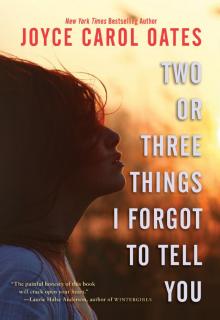 Two or Three Things I Forgot to Tell You
Two or Three Things I Forgot to Tell You Because It Is Bitter, and Because It Is My Heart
Because It Is Bitter, and Because It Is My Heart Missing Mom: A Novel
Missing Mom: A Novel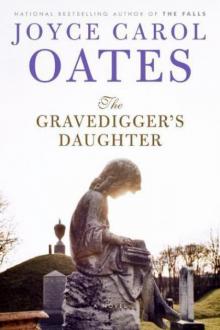 The Gravedigger's Daughter: A Novel
The Gravedigger's Daughter: A Novel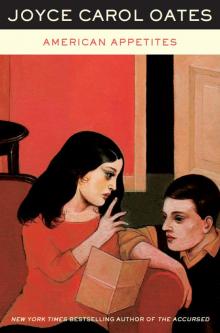 American Appetites
American Appetites Black Dahlia White Rose: Stories
Black Dahlia White Rose: Stories Zombie
Zombie Soul at the White Heat: Inspiration, Obsession, and the Writing Life
Soul at the White Heat: Inspiration, Obsession, and the Writing Life Son of the Morning
Son of the Morning Patricide
Patricide Snake Eyes
Snake Eyes Wonderland
Wonderland In Rough Country: Essays and Reviews
In Rough Country: Essays and Reviews Little Bird of Heaven
Little Bird of Heaven The Haunting
The Haunting The Accursed
The Accursed My Sister, My Love: The Intimate Story of Skyler Rampike
My Sister, My Love: The Intimate Story of Skyler Rampike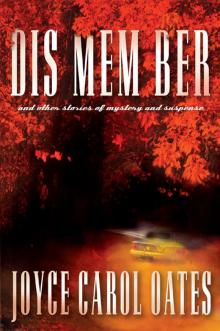 Dis Mem Ber and Other Stories of Mystery and Suspense
Dis Mem Ber and Other Stories of Mystery and Suspense You Can't Catch Me
You Can't Catch Me Daddy Love: A Novel
Daddy Love: A Novel Broke Heart Blues
Broke Heart Blues I'll Take You There
I'll Take You There Mystery, Inc.
Mystery, Inc. We Were The Mulvaneys
We Were The Mulvaneys The Lost Landscape: A Writer's Coming of Age
The Lost Landscape: A Writer's Coming of Age Evil Eye: Four Novellas of Love Gone Wrong
Evil Eye: Four Novellas of Love Gone Wrong Nemesis
Nemesis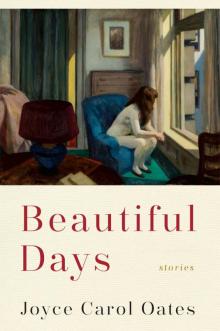 Beautiful Days: Stories
Beautiful Days: Stories On Boxing
On Boxing Mudwoman
Mudwoman Hazards of Time Travel
Hazards of Time Travel Night-Gaunts and Other Tales of Suspense
Night-Gaunts and Other Tales of Suspense Mysteries of Winterthurn
Mysteries of Winterthurn New Jersey Noir
New Jersey Noir Sourland
Sourland Blonde
Blonde The Corn Maiden: And Other Nightmares
The Corn Maiden: And Other Nightmares The Oxford Book of American Short Stories
The Oxford Book of American Short Stories Rape: A Love Story
Rape: A Love Story Lovely, Dark, Deep: Stories
Lovely, Dark, Deep: Stories After the Wreck, I Picked Myself Up, Spread My Wings, and Flew Away
After the Wreck, I Picked Myself Up, Spread My Wings, and Flew Away Freaky Green Eyes
Freaky Green Eyes Night, Neon
Night, Neon I Am No One You Know: And Other Stories
I Am No One You Know: And Other Stories Black Water
Black Water Expensive People
Expensive People The Falls
The Falls Soul/Mate
Soul/Mate The Sacrifice
The Sacrifice The (Other) You
The (Other) You What I Lived For
What I Lived For Prison Noir
Prison Noir High Crime Area: Tales of Darkness and Dread
High Crime Area: Tales of Darkness and Dread Faithless: Tales of Transgression
Faithless: Tales of Transgression Give Me Your Heart: Tales of Mystery and Suspense
Give Me Your Heart: Tales of Mystery and Suspense The Rescuer
The Rescuer A Book of American Martyrs
A Book of American Martyrs American Melancholy
American Melancholy Double Delight
Double Delight Big Mouth Ugly Girl
Big Mouth Ugly Girl Bellefleur
Bellefleur Solstice
Solstice Big Mouth & Ugly Girl
Big Mouth & Ugly Girl Evil Eye
Evil Eye Rape
Rape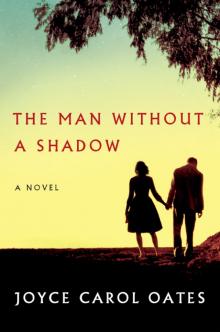 The Man Without a Shadow
The Man Without a Shadow Missing Mom
Missing Mom My Sister, My Love
My Sister, My Love The Gravedigger's Daughter
The Gravedigger's Daughter Beautiful Days
Beautiful Days The Lost Landscape
The Lost Landscape Daddy Love
Daddy Love Dreams from the Witch House: Female Voices of Lovecraftian Horror
Dreams from the Witch House: Female Voices of Lovecraftian Horror The Tattooed Girl
The Tattooed Girl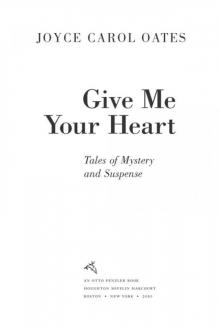 Give Me Your Heart
Give Me Your Heart In Rough Country
In Rough Country The Journal of Joyce Carol Oates
The Journal of Joyce Carol Oates Black Dahlia & White Rose: Stories
Black Dahlia & White Rose: Stories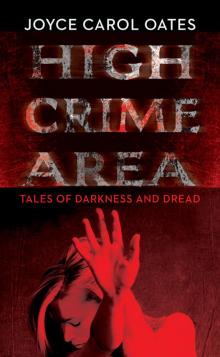 High Crime Area
High Crime Area Lovely, Dark, Deep
Lovely, Dark, Deep A Widow's Story
A Widow's Story Soul at the White Heat
Soul at the White Heat Wild Nights!
Wild Nights!